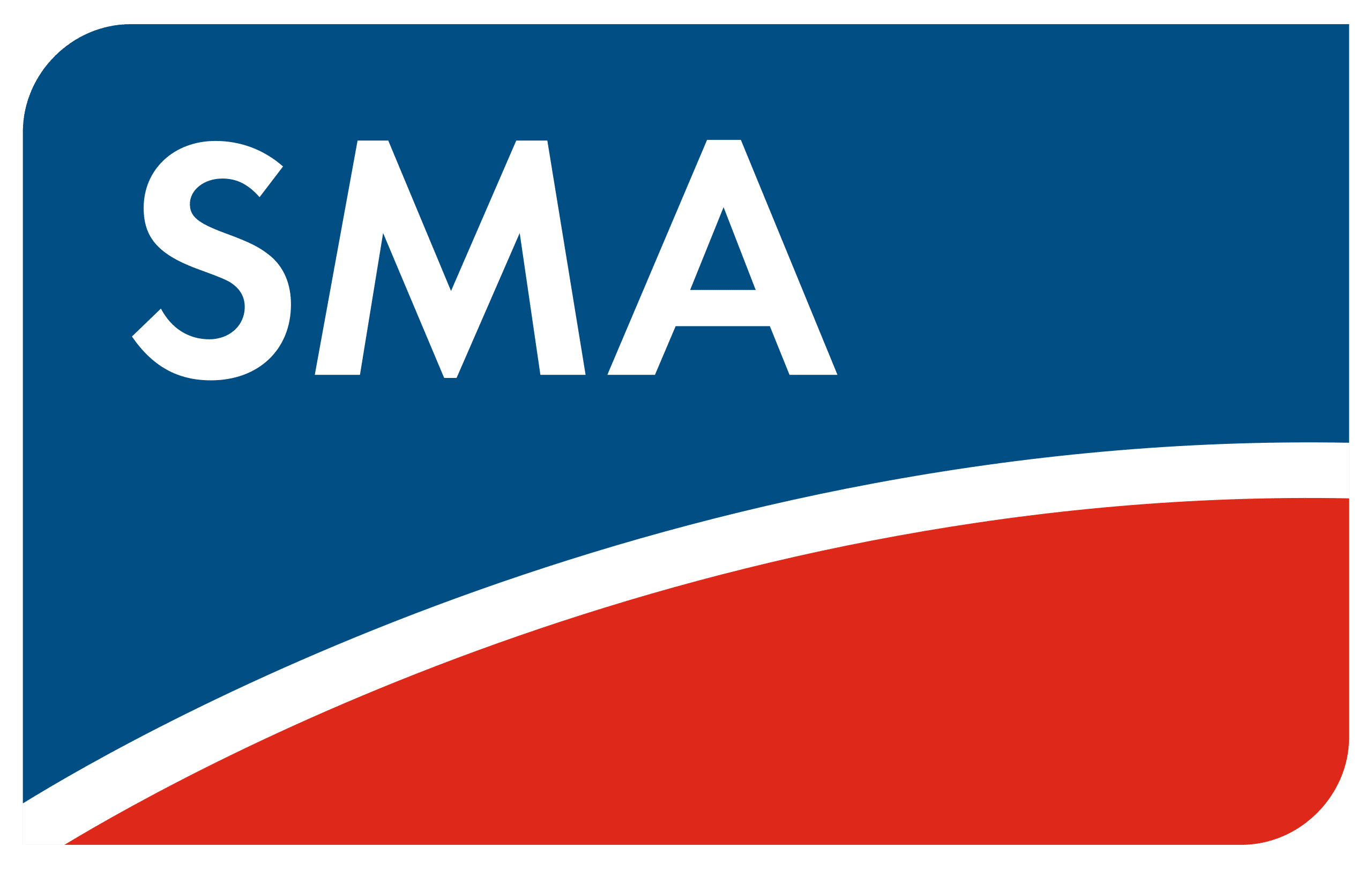Solar Inverters
In your solar power setup, it’s not just about the Solar Panels. Your solar inverter is responsible for converting all that solar energy into usable electricity. This means that the efficiency and reliability of your solar system largely depends on your choice of inverter. We’re here to help you make the right decision.
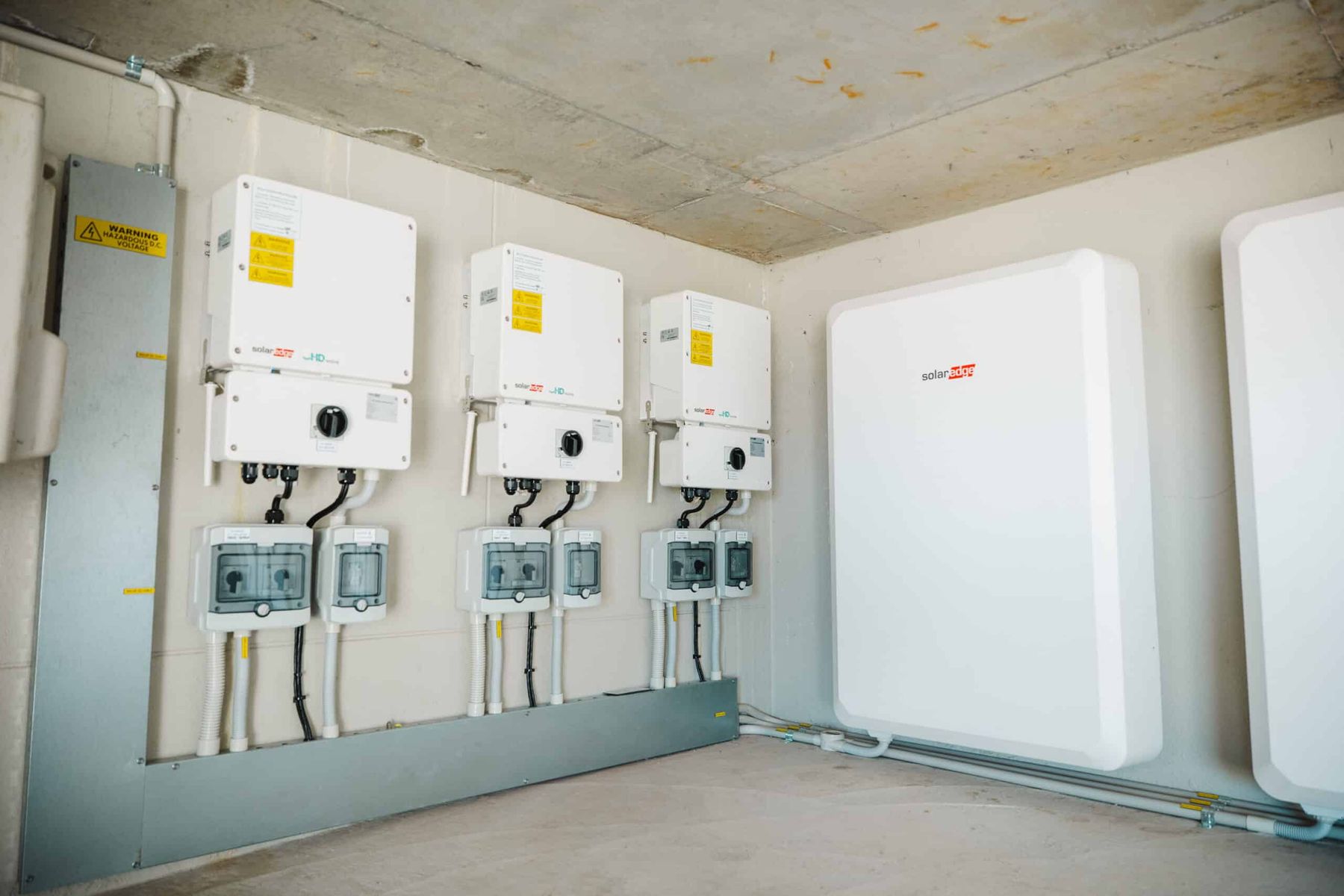
What are solar inverters?
Simply put, a solar inverter is an essential component of your solar power system, serving as the link between your solar panels and the electrical appliances in your home.
Solar Inverters transform the direct current (DC) electricity generated by your solar panels into the alternating current (AC) electricity required to power your lights, appliances and electronics. Since many people aren’t aware of this critical process, Stinson Air & Solar will guide you every step of the way when selecting the perfect solar inverter for your home.
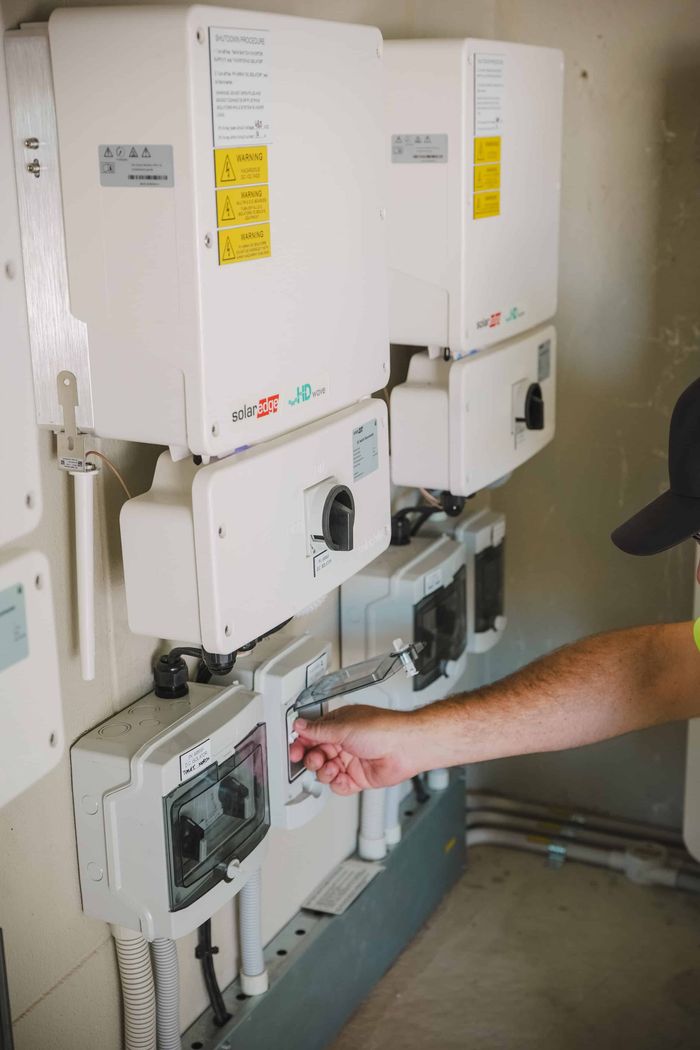

Benefits of choosing the right Solar Inverter
If you’re in the process of researching the right solar inverter for your home our team can help. We will give you an unbiased approach below to help you make an informed decision.
Consumption Monitoring
Advanced Inverter technology now enables monitoring of power consumption down to each individual solar panel. Whether assessing system health or panel performance, premium inverters often come equipped with smart monitoring systems and user-friendly apps that allow you to track your energy production and consumption in real-time.
Longer lifespan of your Solar System
Achieving the ideal balance involves sizing the inverter correctly to match the maximum power output of your solar panels. Inverters that are either over or undersized in comparison to your panels’ maximum output could potentially damage your system.
Future-proof your Home
Considering an electric vehicle (EV) or planning to do renovations to expand your home? Every situation is unique, but selecting the right inverter can adapt to life’s changes. Hybrid inverters or battery inverters can future-proof your home. Stinson Air & Solar offers consultations to review your current usage and future plans to ensure you get the perfect inverter for your needs.
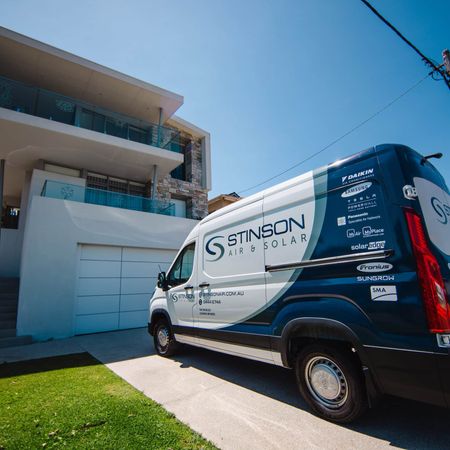
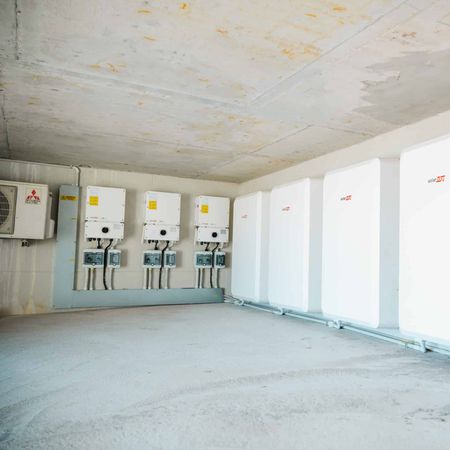


Different Types of Solar Inverters
There are three main types of solar inverters – string inverters, micro inverters, power optimisers, and hybrid inverts.
String Inverters
These are the most common type and are suitable for residential and small commercial installations. This low-cost and durable option connects multiple solar panels in one or more “strings” and converts the DC electricity generated by the panels into AC electricity.
String inverters work best when used on roofs with direct sunlight and no shaded areas.
Microinverters
Microinverters are small, modular inverters installed on each solar panel. Unlike string inverters, which convert power from multiple panels at a central location, microinverters optimise each panel individually. The main benefit of microinverters is that they optimise power at the panel level, so the performance of one panel does not affect the others i.e. if one panel receives less sun, it won’t reduce the output of the rest of the system. For these reasons, we recommend them for homes with partly shaded or complex roof layouts. Their modular design also makes them a great choice if you have plans for future home extensions.
Microinverters are generally more costly so we only recommend them if they fit your situation; however, its worth noting that microinverters will last far longer than string inverters as they handle less power individually and therefore generate less heat.
Hybrid Inverters
Hybrid Inverters get their name from the hybrid functionalities of being a solar inverter that is completely battery ready. Much like your typical string solar inverters, but with an added bonus – they come with built-in battery connections for energy storage. This means you can store excess energy generated during the day for use later on. Consider hybrid inverters if you plan to add battery storage in the future.
Standard (non-hybrid) inverters can have batteries added, but this will require additional components and labor, consequently increasing the cost. Hybrid Inverters come fully equipped for battery connection straight out of the box!
Our recommended Solar Inverter manufacturers
Inverters are the most complex and failure-prone components in your solar system. That’s why, out of the hundreds of manufacturers producing solar inverters globally, we only recommend brands we trust. These brands manufacture efficient inverters designed to last a fair lifespan (typically around 10-15 years for string inverters, and up to 20 years for micro inverters). All of these brands also offer solid warranties and exceptional customer service and support.
Why is Rooftop Solar a Good Investment?
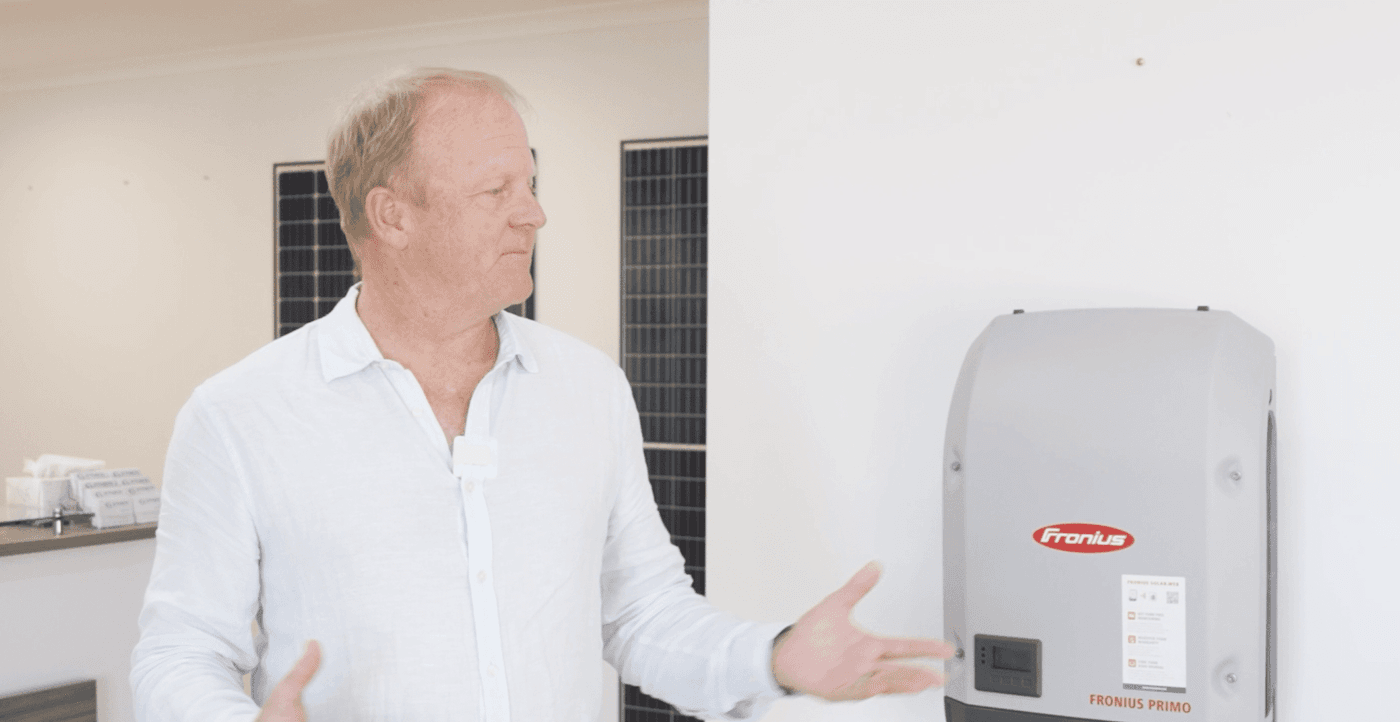
FAQs
What is a solar inverter?
A solar inverter is a box shaped component (commonly stored in the garage) of a solar energy system that converts the direct current (DC) electricity generated by solar panels into alternating current (AC) electricity, which is used to power household appliances, feeds into a Battery for later use or exported back into the grid.
How do solar inverters work?
Solar Inverters transforms the direct current (DC) electricity generated by your solar panels into the alternating current (AC) electricity required to power your lights, appliances and electronics. This matches the standard electrical grid allowing surplus energy to be exported back into the grid.
Do I need both solar panels and a solar inverter?
Yes, you will need both solar panels and an inverter to effectively harness solar power. Inverters acts as the bucket that collects rainwater—your solar energy. Just like choosing a bucket size, selecting the right inverter size is crucial. You can opt for a bigger bucket, but it’ll come at a higher cost. Regardless of how many rain collectors (solar panels) you have on your roof, the bucket (inverter) dictates how much energy you can store or send to the grid. So ensuring your bucket (inverter) matches your rain collectors’ (solar panels’) capacity is key to maximising your energy and usage.
Do all solar power systems need an inverter?
In most cases, solar panels generate DC electricity, which must be converted to AC electricity by an inverter before it can be used or fed into the grid. There are systems that use DC appliances or DC-compatible loads, but these are relatively rare in residential and commercial settings.
Do solar inverters need a battery?
No, solar inverters do not necessarily require a battery. While some solar energy systems include battery storage to store excess energy for use during times when solar power isn’t available, such as at night or during cloudy weather, many systems operate without batteries, feeding excess energy back into the grid for credit or compensation.
What happens if your inverter is the wrong size?
Selecting the correct size for your inverter is essential to match the maximum power output of your solar panels. If the inverter is too small, it won’t be able to manage the full output, resulting in energy wastage and could damage the inverter. Oversizing your inverter is not recommended unless you are expecting a higher usage in the next 5-10 Years e.g. home expansion, increase of house occupants or upgrading to an Electric Vehicle. During your consultation, the Stinson Air & Solar team will thoroughly cover all of these details with you.
What is solar inverter clipping?
Solar inverter clipping occurs when the system’s power production exceeds the total amount of energy the inverters can handle at any given time. If the inverter’s maximum output rating is exceeded, they’ll reduce or clip the amount of electricity.
What is overclocking?
It’s been more common practice recently in Australia to slightly undersize your inverter for it to reach maximum capacity, this is known as “overclocking”. Finding the perfect balance is something our team at Stinson Air & Solar can work out for you as overclocking your inverters too much can damage them.
Will my inverter get less efficient over time?
Like any electronic device, as your system ages, it’s natural for some degradation to occur each year. For instance, if you lose 1% efficiency in the first year, subsequent losses might decrease to around 0.7% in the second year, 0.5% in the third and so forth. Over 15 years, these losses become relatively insignificant compared to the initial savings on the inverter.
How long will a solar inverter last?
The lifespan of a string inverter typically ranges from 10 to 15 years, while micro inverters can last 20+ years. The reason that micro inverters tend to last longer than string inverters is that they handle less power individually. This results in reduced wear from heat stress over time.
The lifespan of your can vary depending on factors such as quality, usage, maintenance, and environmental conditions. Regular maintenance and monitoring can help extend the lifespan of an inverter, but eventually, it will need to be replaced as part of routine system maintenance.
Get started.
Head to our quote request page and supply
your requirements.
Or give us a call
(08) 9444 6744
